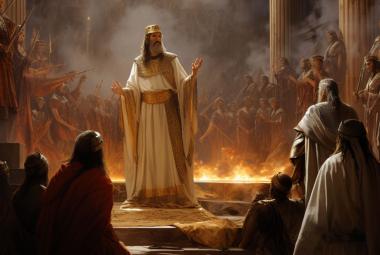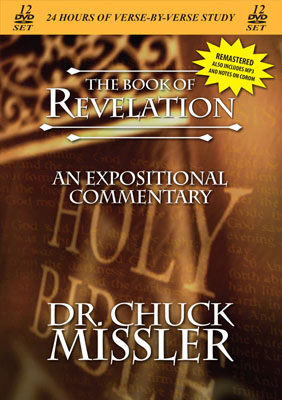The Book of Revelation is the only book of the Bible that promises a special blessing to the reader.1 (Many verses in the Bible encourage reading God's Word--in general--but only one book has the "audacity" to claim, in effect, "Read me, I'm special.")
What is surprising is that, even for many avid Bible readers, this book is overlooked or neglected. One would expect just the opposite.
There are many reasons why this book invariably results in a special blessing to the diligent inquirer. Perhaps the most basic blessing accrues from the fact that in order to understand the back ground of the many idioms and allusions, one will have to trace back into virtually every book of the Bible.
The Book of Revelation consists of 404 verses which contain over 800 allusions to the Old Testament alone!2 One reason the book appears so strange to the uninitiated is that most of us haven't developed enough familiarity with the Old Testament.
One of the keys to understanding the book is also to take it seriously,not to get distracted with fanciful allegories or speculations but to read it with care and diligence as part of the whole Word of God. The Bible consists of 66 books, penned by 40 authors over thousands of years, and yet we now discover that it is an integrated message: every detail, every word, every number, every place name is there by supernatural engineering. And no study makes this clearer than the study of the Book of Revelation.
(The Bible is like any textbook in school, the answers are all in the back!)
Organization of the Book
The Book of Revelation is the only book I know which also has a divinely inspired outline included! Jesus Himself has provided the key to the structure of the book:3 He told John to write:
- the things which thou hast seen, and
- the things which are, and
- the things which shall be hereafter.
The "things which thou hast seen" refers to the vision of our risen Lord just experienced previously in Chapter 1.
The "things which are" refers to the seven churches which were existing at that time in Chapters 2 and 3. Interestingly, the Lord's letters to the churches in these two chapters are the most relevant part of the book for you and me today.
The "things which shall be hereafter (meta tauta)" refers to the remainder of the book.
Joshua as a Model?
It is interesting to notice the parallels in design between the Book of Joshua in the Old Testament and the Book of Revelation. Joshua's name is in Hebrew; in Greek it could be rendered "Jesus." Joshua's mission is to dispossess the usurpers from the Land on behalf of God's people; in Revelation, Jesus' mission is to dispossess the Planet Earth of the usurpers.
Joshua initially sends ahead two witnesses.4 (We call them spies, but all they accomplished was getting a Gentile woman saved.) The two witnesses of Revelation Chapter 11 are a prominent element.
In the initial attack on the Amorite capital of Jericho, every rule of the Torah was violated: the Levites were exempt from military duties, yet they lead the procession. They were to do no work on Sabbath Day, yet here they march around Jericho once a day for six days, and then seven times on the seventh day! They are to keep silent until the final trumpet blast, etc. It is interesting that the Seven Trumpets in Revelation are introduced after a strange silence.5
The opposing kings align themselves under a leader who calls himself Adoni-Zedek ("The Lord of Righteousness"), who is ultimately defeated with signs in the sun and the moon at the battle of Beth Horon.6 The defeated kings hide in caves, etc.
It seems that in Revelation we have the final "Joshua," dispossessing the Planet Earth of its usurpers on behalf of God's people in a manner that is remarkably parallel.
Notes:
- Revelation 1:3; 22:7.
- These are all detailed in our notes accompanying the Expositional Commentary on Revelation.
- Revelation 1:19.
- Joshua 2; Revelation 11.
- Revelation 8:1, et al.
- Joshua 10.







